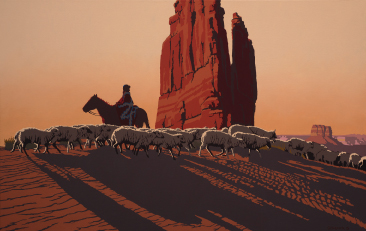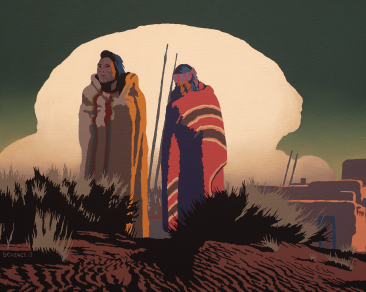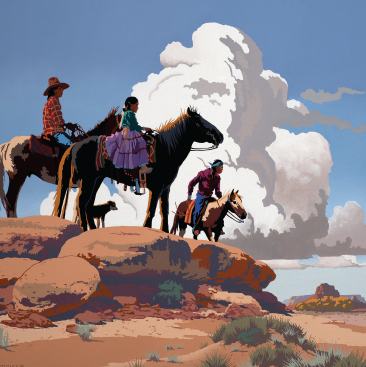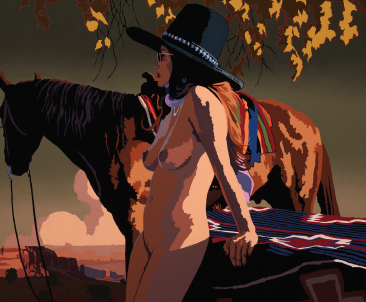Billy Schenck likes to break the rules. Back in the late sixties, a time when the New York art “establishment” was eschewing narrative content because it was too literal and social and political commentary as a way of making art seem dated, this prolific painter of Western people and scenes burst into town with his own way of looking at the West. Initially inspired by old black-and-white posters of Western movies, he achieved almost immediate success by ignoring the common wisdom and following his instincts, imbuing his paintings with a narrative arc and a subtle commentary on the human condition. His work celebrates iconic Western characters and lands while approaching them with a kind of affectionate irony, acknowledging the power of the enduring Western myths even as he pokes fun at them.

The archetypes of those myths include such figures as the Rugged Individualist pitting himself against nature, the Lonesome Cowboy who’s only at peace in the saddle, and the Stoic Indian who bears his burdens with dignity and an aura of mystery. Linking them all is the vast Western landscape, a character unto itself that exudes the drama and subtlety of an inhospitable terrain while beckoning us with its unique challenges and stunning visual appeal.

If Schenck’s flattened, reductivist renderings of these characters and geographic features seem reminiscent of Andy Warhol’s hyper-realistic observations of pop culture, it’s no accident. Intrigued early on by Warhol’s irreverent explorations of the relationships among art, celebrity, and advertising, Schenck became ensconced in the Warholian band of iconoclasts in the late sixties and early seventies and hung out with some of the biggest names of that era: Lou Reed, his proto-punk band Velvet Underground, Viva, et al. Often more observer than participant, he absorbed the unique aesthetic and sensibilities of the time and reflected them in his work.

Schenck is the most recent addition to Blue Rain Gallery’s growing stable of exceptional contemporary artists, and his fresh approach to familiar subject matter is a good fit. “I like his humor, his constructs, the way he develops a scene,” says Blue Rain Gallery owner and founder Leroy Garcia. “He has the vision to create a dialogue that’s new and unique, and he serves as a kind of bridge between the Western art world and the Pop Art movement.”

Schenck cites Sergio Leone of Spaghetti Western fame as another influence. “I have a cinematic approach to my imagery,” he says. “Sergio Leone brought a wry, tongue-in-cheek attitude to his work, and he spoke to the moral ambiguity of the era. I figured if Sergio could do this with film, I could do it with art, presenting an alternative vision of Western painting.”




